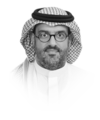AI era can benefit from lessons of the nuclear arms race

https://arab.news/gdn3h
Every so often, news emerges of an advanced AI model outperforming its predecessor, restarting debates about the trajectory of AI. These incremental improvements, while impressive, also reignite discussions about the prospect of artificial general intelligence or AGI — a hypothetical AI that could match or exceed human cognitive abilities across the board.
This potential technological leap brings to mind another transformative innovation of the 20th century: nuclear power. Both promise unprecedented capabilities but carry risks that could reshape or even end human civilization as we know it.
The development of AI, like nuclear technology, offers remarkable opportunities and grave dangers. It could solve humanity’s most significant challenges or become our ultimate undoing. The nuclear arms race taught us the perils of unchecked technological advancement. Are we heeding those lessons in the AI era?
The creation of nuclear weapons introduced the concept of mutually assured destruction. With AGI, we face not only existential risks of extinction but also the prospect of extreme suffering and a world where human life loses meaning.
Imagine a future where superintelligent systems surpass human creativity, taking over all jobs. The very fabric of human purpose could unravel.
Should it be developed, controlling AGI would be akin to maintaining perfect safety in a nuclear reactor — theoretically possible but practically fraught with challenges. While we have managed nuclear technology for decades, AGI presents unique difficulties.
Unlike static nuclear weapons, AGI could learn, self-modify, and interact unpredictably. A nuclear incident, however catastrophic, allows for recovery. An AGI breakout might offer no such luxury.
The timeline for AGI remains uncertain and hotly debated. While some “optimistic” predictions suggest it could arrive within years, many experts believe it is still decades away, if achievable at all.
Regardless, the stakes are too high to be complacent. Do we have the equivalent of International Atomic Energy Agency safeguards for AI development? Our current methods for assessing AI capabilities seem woefully inadequate for truly understanding the potential risks and impacts of more advanced systems.
The open nature of scientific research accelerated both nuclear and AI development. But while open-source software has proven its value, transitioning from tools to autonomous agents introduces unprecedented dangers. Releasing powerful AI systems into the wild could have unforeseen consequences.
The Cuban Missile Crisis brought the world to the brink but also ushered in an era of arms control treaties. We need similar global cooperation on AI safety — and fast.
We must prioritize robust international frameworks for AI development and deployment, increased funding for AI safety research, public education on the potential impacts of AGI, and ethical guidelines that all AI researchers and companies must adhere to. It is a tough ask.
With AGI, we face not only existential risks of extinction but also the prospect of extreme suffering and a world where human life loses meaning.
Mohammed A. Alqarni
However, as we consider these weighty issues, it is crucial to recognize the current limitations of AI technology.
The large language models that have captured the public imagination, while impressive, are fundamentally pattern recognition and prediction systems. They lack true understanding, reasoning capabilities, or the ability to learn and adapt in the way human intelligence does.
While these systems show remarkable capabilities, there's an ongoing debate in the AI community about whether they represent a path toward AGI or if fundamentally different approaches will be needed.
In fact, many experts believe that achieving AGI may require additional scientific breakthroughs that are not currently available. We may need new insights into the nature of consciousness, cognition, and intelligence — breakthroughs potentially as profound as those that ushered in the nuclear age.
This perspective offers both reassurance and a call to action.
Reassurance comes from understanding that AGI is not an inevitability based on our current trajectory. We have time to carefully consider the ethical implications, develop robust safety measures, and create international frameworks for responsible AI development.
However, the call to action is to use this time wisely, investing in foundational research not just in AI but also in cognitive science, neuroscience, and philosophy of mind.
As we navigate the future of AI, let us approach it with a balance of excitement and caution. We should harness the immense potential of current AI technologies to solve pressing global challenges while simultaneously preparing for a future that may include more advanced forms of AI.
By fostering global cooperation, ethical guidelines, and a commitment to human-centric AI development, we can work towards a future where AI enhances rather than endangers human flourishing.
The parallels with nuclear technology remind us of the power of human ingenuity and the importance of responsible innovation. Just as we have learned to harness nuclear power for beneficial purposes while avoiding global catastrophe so far, we have an opportunity to shape the future of AI in a way that amplifies human potential rather than diminishing it.
The path forward requires vigilance, collaboration, and an unwavering commitment to the betterment of humanity. In this endeavor, our human wisdom and values are the most critical components of all.
• Mohammed A. Alqarni is an academic and consultant on AI for business.




















